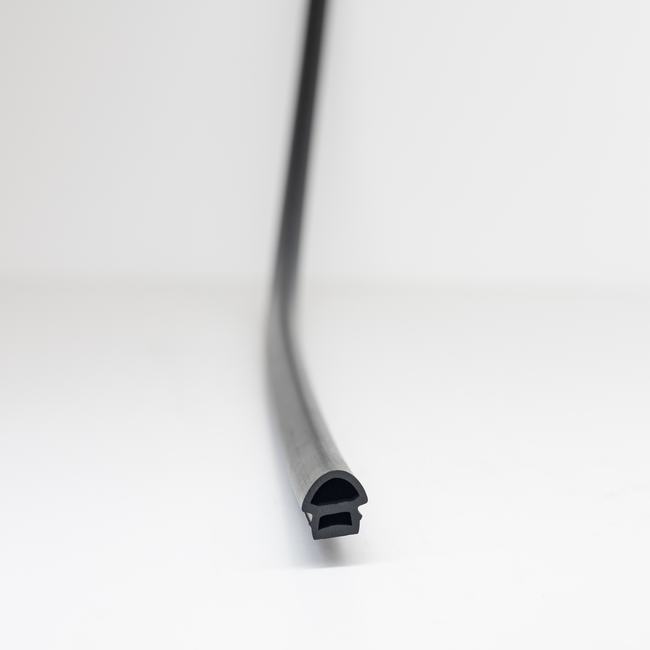Steel door seals are essential components in construction and architecture, serving multiple purposes within both residential and commercial structures. These seals play a crucial role in ensuring the integrity, security, and energy efficiency of steel doors. A steel door seal is designed to provide a durable and reliable barrier against various environmental factors, such as drafts, moisture, noise, and temperature fluctuations. This comprehensive description will delve into the various aspects of steel door seals, including their functions, types, installation methods, and key benefits:
1. Functions of Steel Door Seals:
Steel door seals are designed to perform a range of vital functions, including:
A. Weatherproofing: Steel door seals create an effective weather-resistant barrier, preventing drafts, rain, and wind from infiltrating the building’s interior. This not only enhances comfort but also contributes to energy efficiency by reducing heating and cooling costs.
B. Sound Insulation: Steel door seals help dampen external noise, providing a quieter and more peaceful indoor environment. This is especially crucial in commercial spaces and residential buildings located in busy or noisy areas.
C. Thermal Insulation: These seals play a pivotal role in maintaining consistent indoor temperatures. They prevent heat loss during cold weather and keep hot air out during warm seasons, leading to improved energy efficiency and reduced HVAC costs.
D. Dust and Pest Prevention: Steel door seals create a tight seal against the entry of dust, dirt, and pests, ensuring a cleaner and more hygienic interior environment.
E. Security Enhancement: They contribute to the security of the building by creating an additional barrier against unauthorized entry. The seals, when properly installed, can deter forced entry attempts.
2. Types of Steel Door Seals:
There are several types of steel door seals available, each designed to cater to specific needs and applications:
A. Compression Seals: These seals are made from materials like rubber, silicone, or neoprene and are compressed when the door is closed, creating a tight seal against drafts, moisture, and noise.
B. Astragal Seals: Astragal seals are often used on double doors. They consist of a vertical seal that prevents drafts and moisture from entering the gap between the two door leaves.
C. Threshold Seals: These are installed at the bottom of the door to create a barrier against drafts and prevent water intrusion. Threshold seals can be made from materials like vinyl, rubber, or aluminum.
D. Magnetic Seals: Magnetic door seals use magnets to create a secure and airtight seal when the door is closed. They are commonly used in refrigerators, freezers, and industrial settings.
E. Interlocking Seals: Interlocking seals consist of two interlocking strips that provide an airtight seal when the door is closed. They are often used in industrial and commercial settings.
3. Installation Methods:
The installation of steel door seals varies depending on the type and design of the seal. However, the process typically involves the following steps:
A. Cleaning and Preparation: Ensure that the door and frame are clean and free of debris before installation.
B. Measurement and Cutting: Measure the door dimensions and cut the seal to the appropriate length.
C. Attachment: Attach the seal to the door or frame, following the manufacturer’s guidelines. This may involve adhesive backing, screws, or other fastening methods.
D. Testing: After installation, test the door to ensure that the seal creates a tight and effective barrier against drafts, moisture, and noise.
4. Key Benefits of Steel Door Seals:
The use of steel door seals offers numerous advantages, including:
A. Improved Energy Efficiency: Steel door seals help reduce heating and cooling costs by preventing air leakage, resulting in lower energy consumption.
B. Enhanced Comfort: A well-sealed steel door provides a more comfortable indoor environment by maintaining consistent temperatures and reducing drafts.
C. Noise Reduction: These seals minimize the intrusion of external noise, contributing to a quieter and more peaceful living or working space.
D. Protection Against the Elements: Steel door seals protect against the effects of weather, such as rain, wind, and snow, keeping the interior of the building dry and safe.
E. Security Enhancement: They add an extra layer of security to the building by making it more difficult for intruders to force entry.
In conclusion, steel door seals are crucial components in ensuring the functionality, security, and energy efficiency of steel doors in residential, commercial, and industrial settings. By providing weatherproofing, sound insulation, thermal insulation, and security enhancement, these seals contribute significantly to the overall performance and comfort of the built environment. The choice of the right steel door seal should consider the specific needs of the application and the type of steel door being used. Proper installation is key to achieving the intended benefits of these seals.










